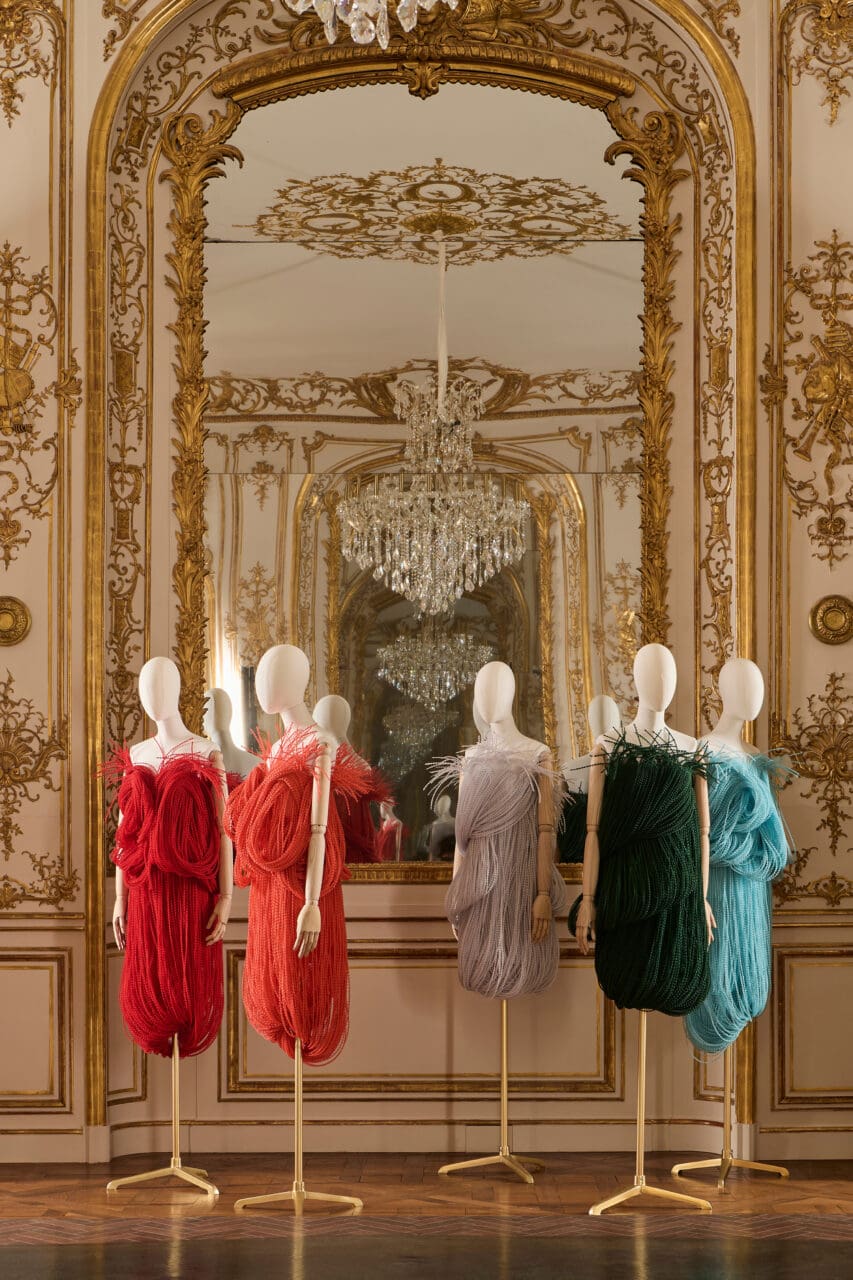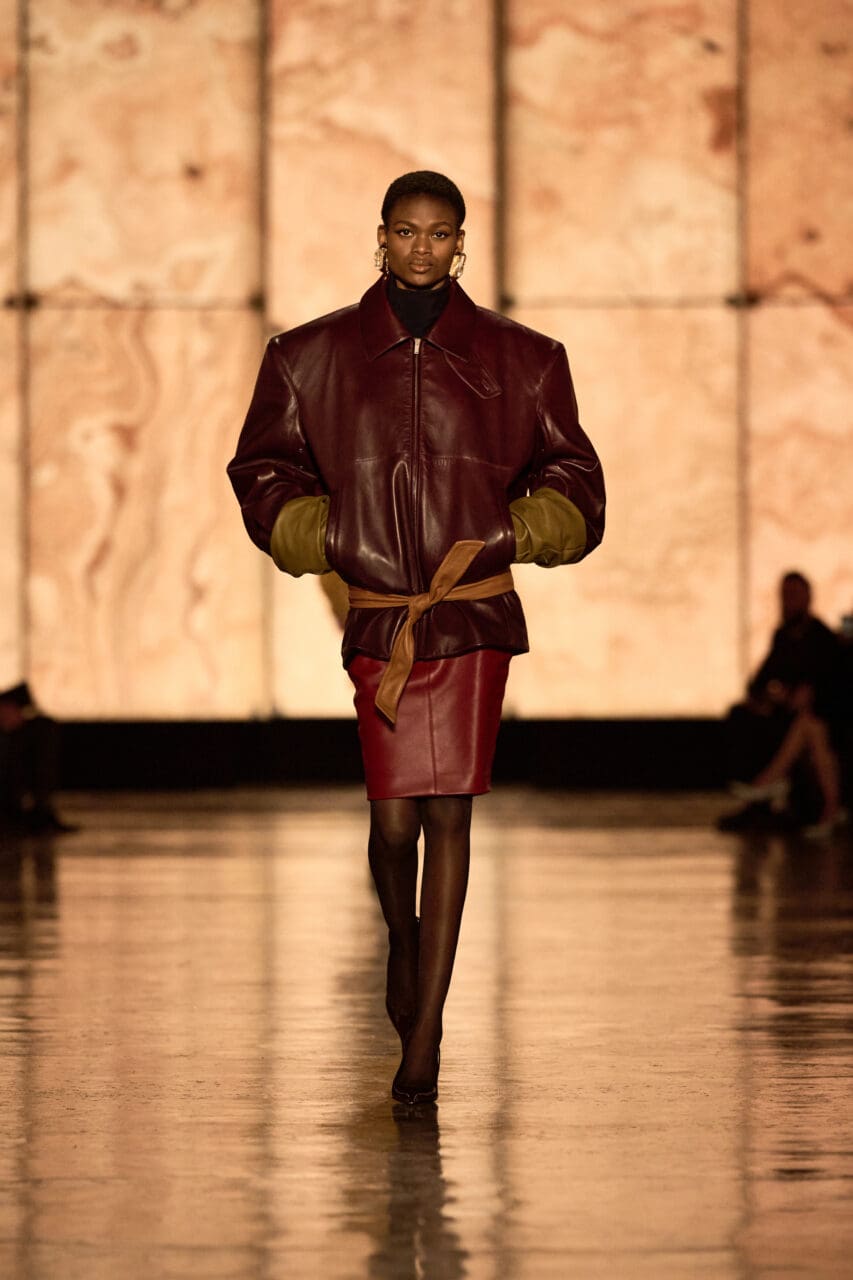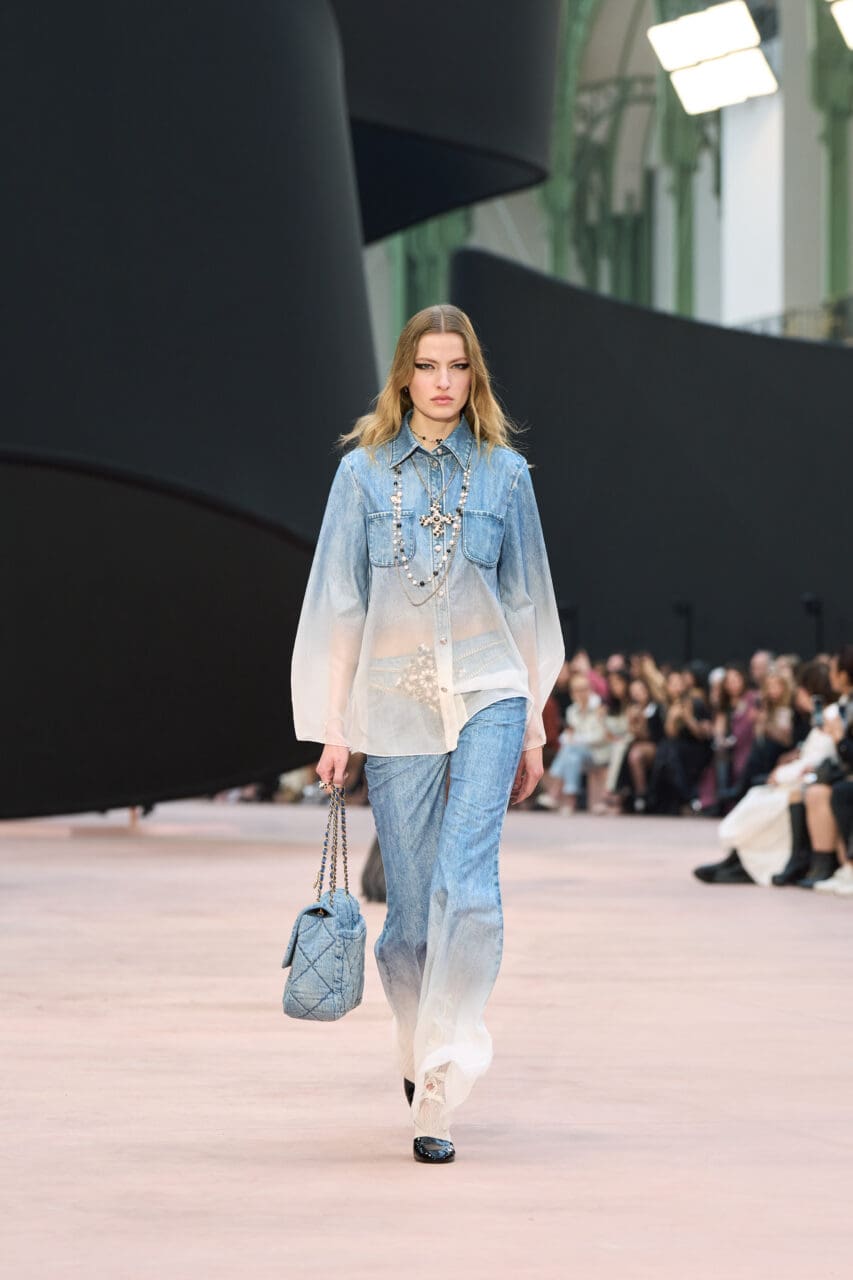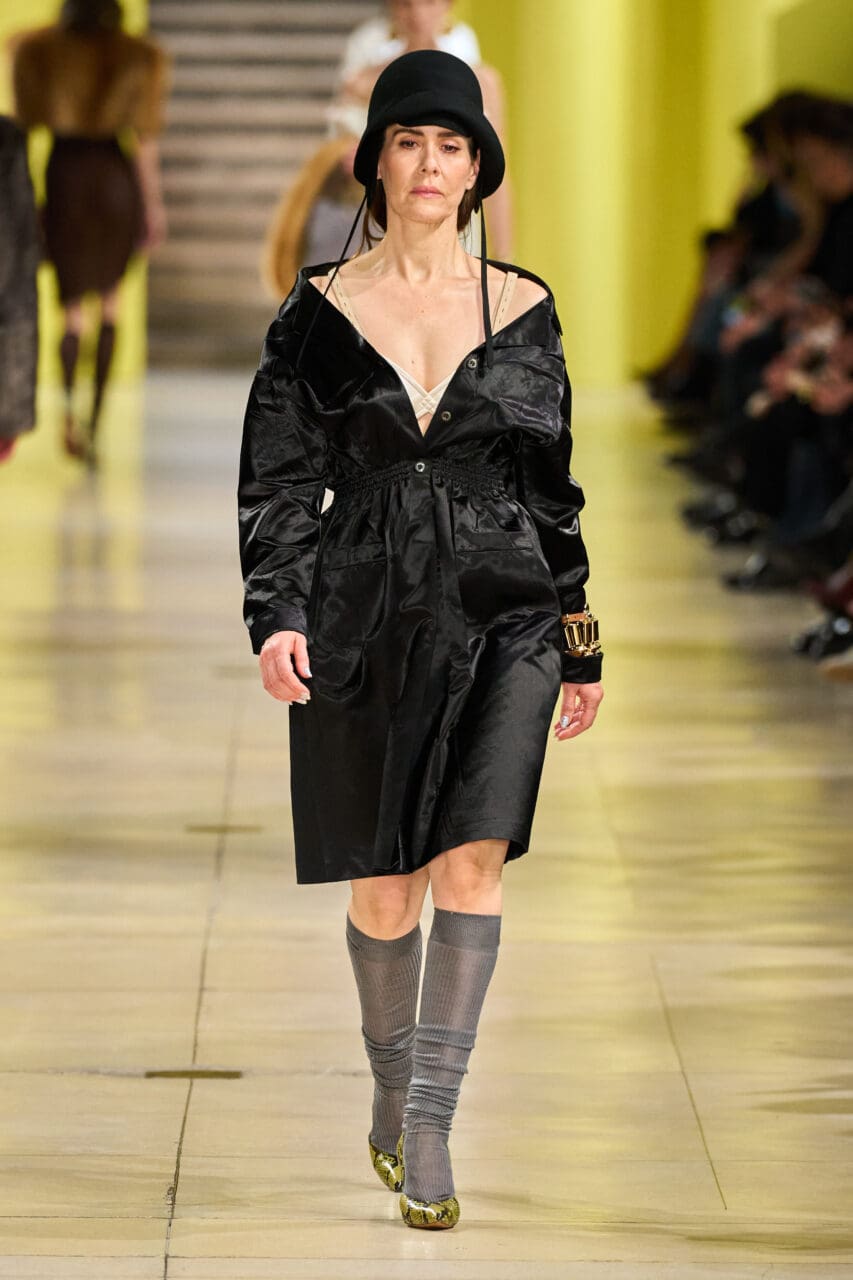The Balenciaga takeover of Shanghai began at the Pudong International Airport where, upon exiting immigration for baggage claim, travelers were greeted by larger-than-life black-and-white photographs of actress Yang Chaoyue sporting a Le City bag, looming over the luggage carousels. It extended to the impossibly chic Regent hotel on the Bund, where room keys came in Balenciaga card sleeves, and on to the fashionable Xintiandi district, where the Nu Xiang Mu Dou restaurant, famed for its xiao long bao or soup dumplings, would host a four-day commemorative collaboration à la the infamous black Erewhon smoothie from six months past: a custom-created Balenciaga steamed vegan xiao long bao, filled with French black truffle. The skins, expertly rolled out by hand and pinched to create 16 perfect pleats, were tinted the same Balenciaga gray as the pyramidal umbrellas shading the tables out front.
It’s clear that Demna does not do anything by halves, and the creative director took the occasion of his first runway show in China, which houses more Balenciaga stores than any other nation, to indulge in a creative exercise deeper than chinoiserie. “It’s such an important place for Balenciaga, we have such an important audience of people here,” he said backstage after the show, which had been years in the making. “You know I don’t believe in doing cruise collections and going on the boat or whatever… but what I believe in is bringing what I do, my vision, to people who appreciate it, consume it, and China is that place for me.”
Balenciaga chose to unveil its spring 2025 men’s and women’s at the Museum of Art Pudong, designed by the French architect Jean Nouvel. Alas, the steamed win-win cakes—a little Shanghainese confectionery meant to symbolize good fortune, dyed lucky red and stamped with the double-B logo—were not able to stave off the rain, which began falling in the late afternoon and into the evening show. That said, the rain did nothing to deter the crowds lined up beyond the barricades, donning plastic ponchos and clutching umbrellas to await celebrities like actress and house ambassador Michelle Yeoh.
Inside the stark white museum was a sea of black. Black visors and wraparound shades, strong-shouldered suits, lace-trimmed dresses, denim slashed from top to toe; even the sea of black umbrellas, provided by the house, met the unspoken dress code. Demna has always played with the artful clash of high and low, blurring the lines between good and bad taste. It’s no wonder that his work has won so many fans here in China, whose local fashion has, for so many years, toed a similar line. A 40 yuan top, fetched from a street vendor, would not have looked out of place, and neither did the man wearing a plain black t-shirt that said Contemporary S**t.
The show took place on the white granite walkway behind the museum, facing the Pudong skyline with two towers advertising the Balenciaga logo. With the weather, the tops of those skyscrapers disappeared in the cloud of fog that had descended, creating a mood that fit the slight “Shanghai noir” vibe Demna sought to convey, though it was a rather loose interpretation. “You know, I think so much less than people think when I make looks,” he explained matter of factly. “I just like those silhouettes and I would like to dress like that and I would like to see women dress like that. There’s really no intellectualizing behind it.”
Eschewing the more obvious tropes, Demna focused instead on the verticality of the Pudong skyline directly behind the runway, which he expressed as “super-elongated, vertical silhouettes.” There were extreme platform “metalhead” boots, worn with overlong coats that would have dragged well along the floor if not for the extreme creepers. “I made this collection on a very instinctive level of what I like, what excites me, what creates desire in me,” he said. “Where I’m bringing Balenciaga with this show [is] finding a new type of balance between all these different facets of my aesthetic and style.”
The proportion play was again most interesting here. There was an eclectic mix of clean hourglass skirts, clinging digital print bodysuits, and garments like a little trench dress, cut wide at the shoulders and belted low along the hips, that low angle echoing the ultra low-rise jeans that flashed boxers. As for this season’s bags, Demna said, “I made shoes into lunch bags, why not make puffer jackets and trench coats into tote bags?” A checked shirt, too, was transformed into a functional handbag slung over one shoulder through its collars, in what he called a “play on trompe l’oeil.”
More irreverent designs—the ripped tights pantashoes, a Balenciaga shoe box clutch made from leather—were sprinkled among a vast range of Balenciaga staples. “I tried to create a new equilibrium between different parts of my aesthetic, so I’m not only the streetwear-hoodie guy or couture reinterpreted,” he said. “It’s all of that and maybe more.” The final series of experimental semi-couture and couture dresses honed in on materiality: A cocoon column-like dress was pieced together from travel bags, another was cut from gift packaging gold foil, and a third was made from Tyvek paper, a subtle nod to one of China’s greatest inventions. The closing gown was constructed from a collection of pink plastic bags over a decade old, the strips cut by hand and pierced with wires to create feathers that resembled a piece from the house’s archive. Couture made from recycled material, it cut a particularly sharp image amid the falling rain in a city of such rapid consumption.
As for the weather, Demna said, “I was a bit stressed, but then I realized this is part of learning how to let go, the control. It actually added a layer of some kind of uncontrolled poetry to what I wanted to bring to Shanghai for the first time with Balenciaga.”
Editor
Monica KimCredit
Lead image: Filippo Fior / Gorunway.com





